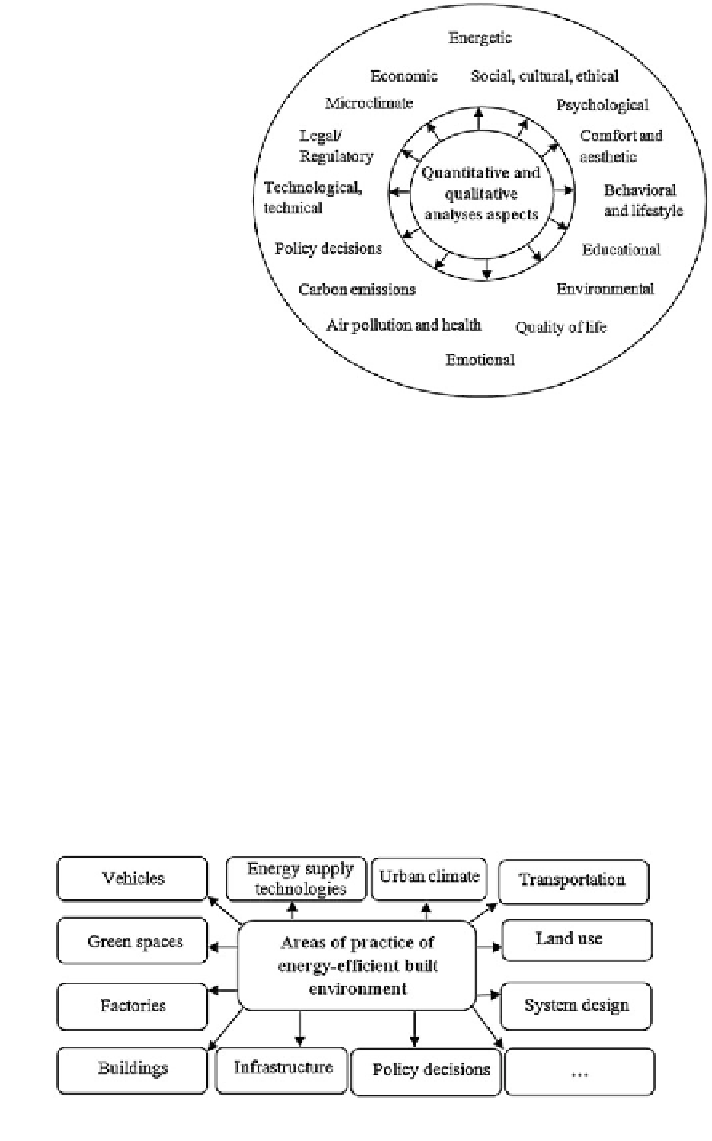Civil Engineering Reference
In-Depth Information
Fig. 1 Life cycle of energy-
efficient built environment
quantitative and qualitative
analyses aspects
the largest energy consumers and greenhouse gas (GHG) contributors (Mendoza
et al.
2012
).
The trees and the open green spaces have multiple uses and their presence in the
outdoors makes a major contribution to the saving of energy inside the buildings as
well as to the improvement of the microclimate in the urban spaces adjacent to
buildings and in urban subareas. The amount of energy needed for heating and
cooling is decreased considerably by the suitable placement of trees around
buildings, so that there is much shading from the sun during the summer and as
little as possible during the winter (Georgi and Dimitriou
2010
). Life cycle of
energy-efficient built environment quantitative and qualitative analyses aspects
and application areas are presented in Figs.
1
and
2
.
The problem is how to define a life cycle of energy-efficient built environment
when a lot of various parties are involved, the alternatives come to hundreds
thousand and the efficiency changes with the alterations in the environment
Fig. 2
Areas of practice of energy-efficient built environment

